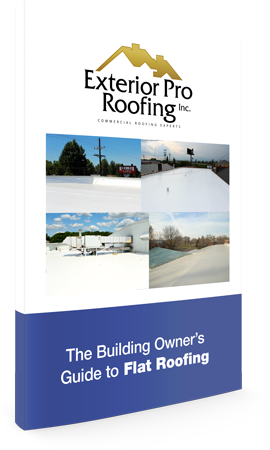Rubber roofing can provide years of service when properly cared for and maintained. And even though advances in flat roofing are pushing the market towards thicker, re-enforced and white rubberized roofing membranes, getting the most out of your existing EPDM rubber roof just makes good business sense.
Here are some simple ways to care for and maintain you rubber roof
1. Become pro active towards roof maintenance instead of passive
Most problems that occur with rubber roofs can be detected by means of a visual inspection a couple of time a year. With a little training you can learn how to spot problem areas quickly and identify potential future leaks. Being pro-active towards you roof will not only allow you to better plan for your maintenance and/or replacement cost, you will avoid the disruptions to your schedule that time robbing roof leaks tend to create. Discovering roof leaks while the weather is still good as opposed to finding out in the dead of winter will not only mean the roof can be repaired quickly, it could also prevent several months of collateral damage an uncheck leak can cause. Plan on inspecting your roof or roofs twice a year at a minimum.
 2. Be prepared to make minor repairs on the spot
2. Be prepared to make minor repairs on the spot
If you are in charge of performing roof inspections take it upon yourself to find out what type of roofing system you have and who the manufacture is. Once you know who manufacture is you can purchase sealants and caulking that are either the exact type and made for your roof or at least compatible with your existing rubber roof. Applying tar, sealants, or caulking the is not compatible with the rubber roof may not only void the warranty but it may cause more damage than good. Take along caulking and sealants with you as your perform your inspections and correct loose, missing or deteriorated caulking as you find it.
3. Remove Roof Top Debris immediately
Third party damage is absolutely the most common reason properly installed rubber roofs leak. Holes are easily made for tools being dropped, HVAC unit doors being set on rubber, screws being dropped and stepped on, and from old satellite and antennas being drug across or laid down and left on top of roofs. As you perform your inspection pick up loose screws, nails, debris and anything else not essential to the functioning for the roof. Keep your rubber roof clean.

Ensure Roof drains, scuppers, and gutters are clean and attempt to remove debris from roof. Cleaning leaves and debris from a roof drain only to throw it a few feet away does little good as it will end up back in the drain the next rain event.
4.Build a relationship with a flat roofing contractor
Developing a good working relationship with a flat roofing contractor will allow you to have repairs done quickly and effectively. Over time the repair crew will learn more about your building’s roof but also how your business functions. Interactions between your employees and/or maintenance crew and those of the roofing company should become more meaningful and productive over time if not cheaper, especially if you are managing multiple buildings on a large campus. Decent Flat roofing contractors will enjoy and reciprocate the respect you show them and will work harder to keep your business and your buildings dry.







